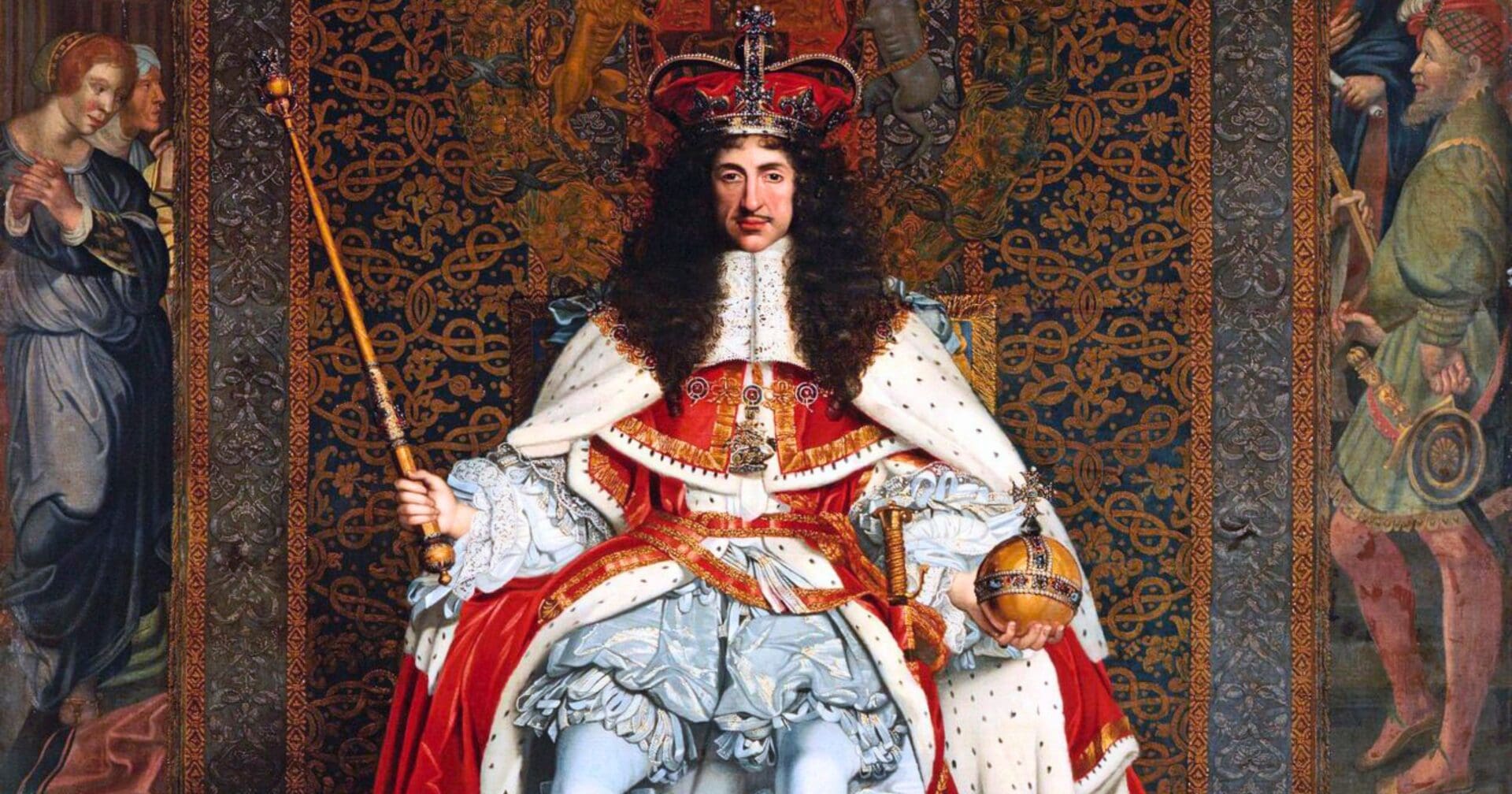King Charles II was one of the most beloved and popular kings of England, often going by the name the Merry Monarch. Despite his friendly sentiments towards Catholics, his reign over of two decades saw no end to the penal laws and martyrdom of priests and the faithful. However, most don’t know that on his deathbed he secretly converted to Catholicism.
On June 1st of 1670, Charles II signed the Secret Treaty of Dover with King Louis XIV of France. Its terms were that England would send 60 warships and 4000 soldiers to assist the French in their war against the Dutch, and in exchange Charles II would receive a yearly pension and 6000 soldiers if there was ever a rebellion against him. The final stipulation was that Charles II converted to Catholicism, a term of the treaty he ended upholding.
Fifteen years after signing the treaty, Charles II awoke on February 2, 1685 in poor health, having suffered a stroke in his sleep. Despite his physician’s best efforts, his condition worsened. Three days later on February 5, it was clear the monarch’s condition was terminal and his court made arrangements to prepare for his eventual passing.
On that day, a Benedictine monk by the name of Father John Huddleston was smuggled into the king’s private chambers. Charles II brother, the Duke of York and soon to be James II, then announced to the king’s court that “Gentlemen, the King wishes everybody to retire except the Earls of Bath and Feversham.” After the room was cleared, James II told Father Huddleston that the king wished to finally convert. What proceeded was recorded by historian and Anglican bishop Gilbert Burnet who wrote:
“When Huddleston was told what was to be done, he was in great confusion, for he had not brought the host. He went, however, to another priest, who lived in the court, who gave him the pix, with an host in it. Everything being prepared, the Duke whispered the King in the ear; upon that the King ordered that all who were in the bedchamber should withdraw, except the Earls of Bath and Feversham; and the door was double-locked. The company was kept out half an hour; only Lord Feversham opened the door once, and called for a glass of water. Cardinal Howard told Bishop Burnet that, in the absence of the company, Huddleston, according to the account he sent to Rome, made the King go through some acts of contrition, and, after obtaining such a confession as he was then able to give, he gave him absolution. The consecrated wafer stuck in the King’s throat, and that was the reason of calling for a glass of water. Charles told Huddleston that he had saved his life twice, first his body, then his soul.
When the company were admitted, they found the King had undergone a marvelous alteration. Bishop Ken (the Anglican Bishop of Bath and Wells) then vigorously applied himself to the awaking of the King’s conscience, and pronounced many short ejaculations and prayers, of which, however, the King seemed to take no notice, and returned no answer. He pressed the King six or seven times to receive the sacrament; but the King always declined, saying he was very weak. But Ken pronounced over him absolution of his sins. The King suffered much inwardly, and said he was burnt up within. He said once that he hoped he should climb up to heaven’s gates, which was the only word savoring of religion that he used.”
King Charles II died peacefully at noon the next day, after upholding the final condition of the Secret Treaty of Dover. His brother succeeded him as James II of England, and reigned for three years until his deposition during the Revolution of 1688. King Charles II and James II were the last two Catholic monarchs to rule over England, Scotland, and Ireland.
Photo credit: PD via Wikimedia Commons















Well, you’ve changed my opinion of Charles II. Great history. Thanks.
[…] Is a Sense of Humor Necessary for Salvation? – Fr. Basil Cole O.P., Homiletic & Pstrl Rvw The Secret Deathbed Catholic Conversion of the King of England – Billy Ryan, uCatholic Ecumenism, Sanctity, and the White Rose – Ricke Becker, NC […]
Would this fact ordinarily be taught to university students studying this period in the UK? Just wondering.
Does the Queen of England know this?
[…] Some of those on those lists in further detail — The Amazing Deathbed Conversion of Oscar Wilde, The Little-Known Story of John Wayne’s Deathbed Conversion to Catholicism, The Secret Deathbed Catholic Conversion of the King of England. […]
[…] his brother and predecessor King Charles II (who he himself became Catholic in a deathbed conversion) made allies of Spain to regain his throne in England, James II was exiled again to Spain, joined […]
[…] Source: ucatholic.com […]